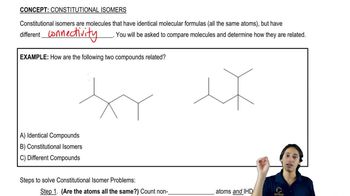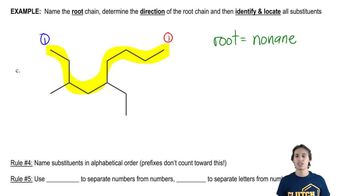Draw skeletal structures for the following:
e. 2-methyl-4-(1-methylethyl)octane
 Verified step by step guidance
Verified step by step guidance Verified video answer for a similar problem:
Verified video answer for a similar problem:



 3:43m
3:43mMaster The different parts of an IUPAC name with a bite sized video explanation from Johnny
Start learning